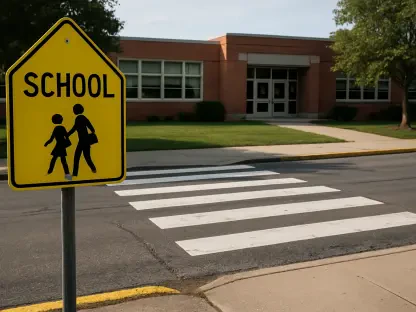Short Introduction
I’m thrilled to sit down with Camille Faivre, a renowned expert in education management who has been at the forefront of integrating technology into learning environments. With a deep focus on open and e-learning programs in the post-pandemic era, Camille has been instrumental in helping institutions navigate the challenges and opportunities of digital education. Today, we’ll dive into the transformative role of AI in classrooms, exploring how it’s reshaping student experiences, the importance of fostering AI literacy, and the ways educators can guide responsible use of these powerful tools.
How did you first become aware of AI’s growing presence in education, and what was your initial reaction to students using tools like ChatGPT for their schoolwork?
I first noticed AI’s impact a few years ago when students began mentioning tools like ChatGPT casually in conversations about their assignments. It struck me how seamlessly it had integrated into their lives. My initial reaction was a mix of curiosity and concern—I was amazed at the potential for personalized learning support, but I also worried about the lack of guidance around its use. It became clear that we needed to address this shift head-on, not by restricting it, but by understanding how it could fit into education responsibly.
What do you see as the most significant way AI is changing the daily academic lives of students today?
AI has become a go-to resource for students, almost like a digital study buddy. It’s not just about getting quick answers; students are using it for brainstorming ideas, drafting essays, and even breaking down complex concepts. This constant accessibility—through apps on their phones or laptops—means learning can happen anytime, anywhere. However, it also blurs the line between independent work and reliance on technology, which is something we need to navigate carefully as educators.
Why do you think so many students are hesitant to tell their teachers about using AI tools for their assignments?
I believe it often comes down to uncertainty and fear of judgment. Many students aren’t sure if using AI is considered acceptable or if it might be seen as cheating. There’s also a cultural aspect—education systems have traditionally emphasized individual effort, so admitting to using a tool like this can feel like confessing to a shortcut. Without clear guidelines from schools, students are left guessing, and most choose to keep it under wraps to avoid potential consequences.
How can educators turn this trend of AI use into an opportunity for deeper learning rather than viewing it as a threat?
Educators have a unique chance to embrace AI as a partner in the learning process. Instead of banning it, we can teach students how to use it intentionally—showing them how to craft effective prompts, evaluate the accuracy of responses, and reflect on their learning journey. For instance, incorporating AI into classroom activities, like analyzing its outputs together, can build critical thinking skills. It’s about shifting the focus from the final product to the process of learning, ensuring students grow even as they leverage these tools.
What role does AI literacy play in preparing students for a future where technology is so deeply embedded in every aspect of life?
AI literacy is absolutely essential—it’s not just a classroom skill, it’s a life skill. Students need to understand how AI works, recognize its limitations, and spot biases in its outputs. This prepares them for a world where AI influences everything from job applications to healthcare decisions. Without this literacy, there’s a risk of widening inequalities, especially for students from under-resourced backgrounds who might have access to the tools but not the know-how to use them effectively. Equipping them with these skills ensures they can navigate and lead in an AI-driven society.
How can schools ensure that AI tools are used equitably to support all students, especially those from diverse or under-resourced communities?
Equity in AI use starts with access and education. Schools need to provide the necessary infrastructure—devices, internet, and software—so every student can engage with these tools. Beyond that, it’s about tailored training for both students and teachers on how to use AI to meet individual needs, like language support for multilingual learners or personalized learning plans for those who need extra help. We also have to be mindful of cultural and socioeconomic barriers, ensuring that AI doesn’t become another divide but a bridge to opportunity through targeted support and inclusive policies.
What practical steps can teachers take right now to integrate AI into their classrooms in a way that promotes ethical and responsible use?
Teachers can start by setting clear expectations—create a simple AI use policy that outlines when and how it’s okay to use these tools. They can also make the process transparent by asking students to document how they used AI in their work, reflecting on what helped or didn’t. Modeling critical evaluation by using AI live in class to dissect its responses for accuracy or bias is another powerful step. Additionally, teaching students to craft thoughtful prompts and discussing ethical concerns like plagiarism or data privacy can build a foundation of responsible use. Small, intentional actions like these can make a big difference.
What is your forecast for the future of AI in education over the next decade?
I envision AI becoming a seamless part of the educational landscape, not as a replacement for teachers but as a collaborative partner. We’ll likely see classrooms where students design projects with AI, debate its ethical implications as part of the curriculum, and use it for real-time personalized feedback. I also foresee new roles for educators, like AI coaches or ethics facilitators, emerging to guide this integration. If we prioritize equity and intentionality, I believe AI can help us create a more inclusive, dynamic learning environment that empowers students to not just adapt to technology, but to shape it for the better.









